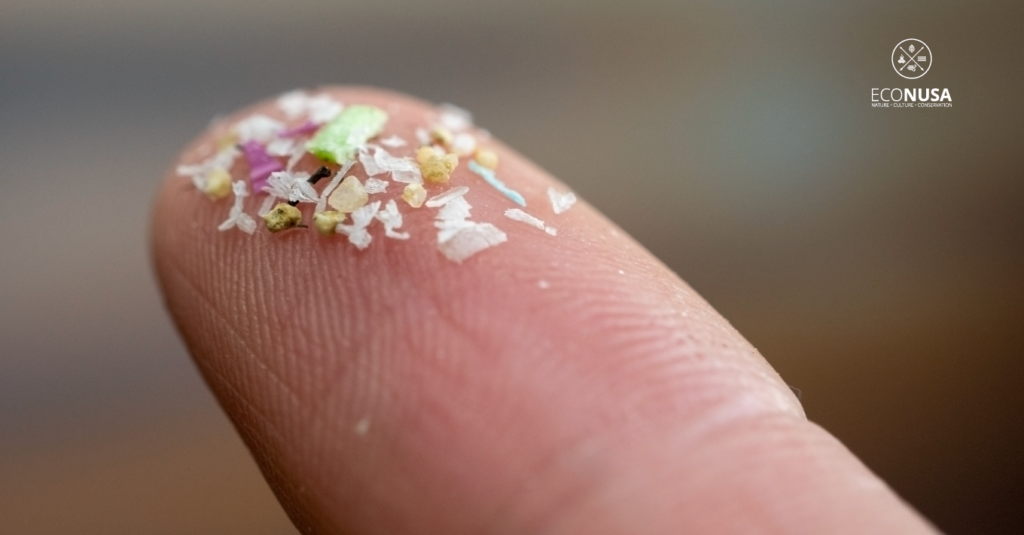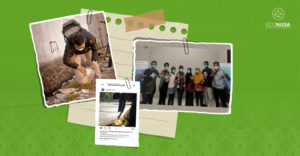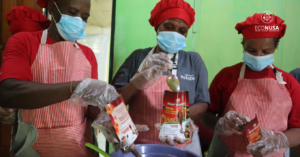
Unfortunately, the use of plastic is close to our daily lives. Data shows that 90 percent of food products packaging use plastic materials. Plastic pollution is still a big scourge that haunts the world, including Indonesia. The National Waste Management Information System records that in 2022, out of 17,834,071.68 tons of waste originating from 145 regencies and cities in Indonesia, 18.6 percent or equal to 3,317,137.3 tons were plastic waste. Majority were comes from household waste.
Even though a lot of plastic waste has started to be recycled, there is still a lot of plastic that pollutes the environment and ends up in the soil, river bodies, lakes, and even the sea. Slowly, the plastic components break down into smaller plastic particles which known as microplastics.
Read also: Plastic Free Rally Calling Producer to Stop Sachet
Microplastics are plastics that are less than 5 millimeters in size. According to the NOAA Marine Debris Program, microplastics can come from many sources, usually from plastic debris that pollutes the ocean and erodes little by little into smaller sizes. Apart from that, there are also factory-made microplastics in the form of microbeads which are used to exfoliate dead skin cells in beauty products. These tiny particles will easily pass through the water filtration system and end up contaminating the sea along with other microplastic pollutants. The very small size of microplastics might be ingested and accumulate in the bodies and tissues of organisms, including humans.
A study published in 2017 entitled The Presence of Microplastics in Commercial Salts from Different Countries conducted by Ali Karami et. al., revealed the existance of microplastics in salt samples from 17 commercial brands originating from eight countries, namely Australia, France, Iran, Japan, Malaysia, New Zealand, Portugal, and South Africa. Another study conducted by Sherri Mason with the University of Minnesota in the same year also found that of the 12 table salt samples studied, all contained microplastics, of which ten brands were sea salt products.
In Indonesia, microplastic particle unfortunately also found in salt. This is represented through the results of research conducted by Muhammad Ikrar Tri Murpa et. al., in 2018 which examined the microplastic content in table salt products circulating and being sold at the Terong Market, Bontoala Village, Makassar.
Read also: Anticipating Fish with Plastic Consumption, Sorong City Stops Plastic
So what is the impact of microplastic contamination on the salt that we consume every day? The latest findings from research conducted by scientists at the University of Hull, England in April 2022 identified the presence of microplastics in human lungs. The study found there were 39 microplastic particles in 11 of the 13 lung tissue samples tested. The microplastic particles found consisted of 12 types of plastic commonly used in packaging, bottles, ropes, and threads.
As reported by the Guardian, Professor Dick Vethaak, an ecotoxicologist from Vrije Universiteit Amsterdam, also revealed the facts of microplastic contamination found in the human bloodstream. In blood taken from 22 donors who were tested in the laboratory, 80 percent was contaminated with microplastics. “This study has indicated the presence of microplastics in our blood. The particles are in the blood, and they are transported throughout our bodies. It’s astonishing and worrying,” said Professor Dick Vethaak.
Read also: Microplastic and Plastic Waste Threatening Life
The results of this study explained that microplastic particles were able to stick to the outer membrane of red blood cells which caused the limitation of red blood cells’ ability to transport oxygen. Microplastics were also found in the placenta of pregnant women, where the particles move quickly through the heart, lungs, and brain of the fetus. Prof. Dick Vethaak also explained another shocking fact that microplastic particles were found in baby feces more than in adult human feces.
We can no longer ignore the threat of plastic pollution. Plastic has really polluted our lives, not only the environment but also entered our bodies and might threaten our children and grandchildren. The world is facing a plastic pollution emergency, and we all need to do our part to stop this massive threat.







